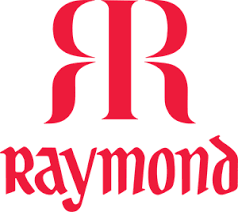India is said to be the next big influence in the global textile market. Through the article you will understand how the shift in economies will take place in India and what factors shall influence Indian textile industry to touch $500 billion mark by 2025.
A Decade ago, China’s polyester industry had seen tactical advancements and observed several commercial augmentations which led to enormous investment cycles making a profound impact on the rest of the world. China now exports over $280billion which contributes to 45% of the total world trade. It has always been perceived as a low cost region. But this worldview now pops up to be outmoded. Years of steady change in wages, productivity, currency values, and other factors are quietly but dramatically redrawing the map of manufacturing cost competitiveness in china and allowing space for other potential markets like INDIA.
India has been a promising economy in textiles and the domestic consumption growth has been astounding with 13% CAGR in the last 5 years. We always had the benefit of demography in population and mainly the deep rooted organized retail. The industry is an amalgamation with more than 30 companies over $200 million turnover and a 100 more facing issues with economies of scale but look promising in the future.
India, currently clutches a 5.2% share in global export (T&A) and will be targeting to double the share in the next 10 years to be on par with the china metrics. India has been conventional manufacturer for cotton products but lately the industry has experienced increase in prices of cotton fabric. Therefore, forcing the manufacturers to shift majorly towards manmade fibers (MMF).
Polyester consumption is predominantly flourishing and will maintain the trend. Polyester find its uses in apparel, industrial textile, home textile etc. The advancement of fiber consumption in India looks encouraging due to several factors like youth population into sportswear and increase in automobile/ aviation sectors also pushes the MMF consumption for seats, covers, airbags etc.
The existence of indigenous textile goods is minuscule in many product categories. Few MMF goods like jerseys, pullovers, cardigans etc. are
traded over $200 bn whereas India contributes only 0.19% i.e. $385Mn to the collective trade. There are many product categories yet to be tapped by Indian textile manufacturers which shall result in augmented growth of the industry.
“Deep Focus on strengthening the textile and apparel value chain shall extract maximum benefits in the textile industry”.
China and its counterparts like Taiwan & South Korea have been the market leaders in MMF sector since years. They have set the benchmark. India has to hit the bar by revamping its value chain at every single stage, right from staple fiber production to end product.
As per the studies by leading advisors of textile sector:
- The current Indian Manufacturers have to scale up the capacities for fiber production and there shall be penetration of International players investing alone or have Joint ventures with Indian industry giants.
- Textile industry will record changes in infrastructure with investments in knitting and weaving for producing complex fiber materials.
- There shall be several tie ups with international partners for improvement in processes.
Latest study on the textile sector also reflects that Indian yarn Manufacturers are competitive globally and are adaptive to scaling. They shall meet the demand growth when required. Whereas the manufacturing firms should focus on design and product development aspects. These two will play a crucial role in multiplying the demand growth of the company.
“Indian Textile Manufacturing should be geared up for several foreign investments, joint ventures and scaling manufacturing economies on Man Made Fiber products”.
Harish Chatterjee, VP- Manufacturing Raymond Limited

